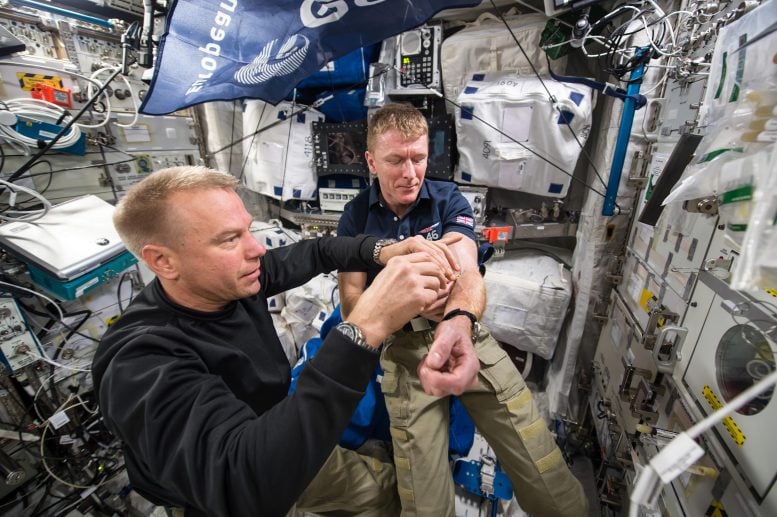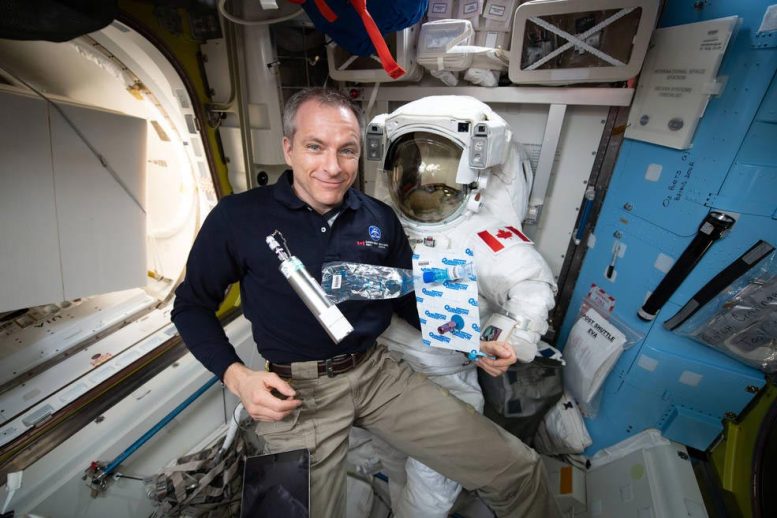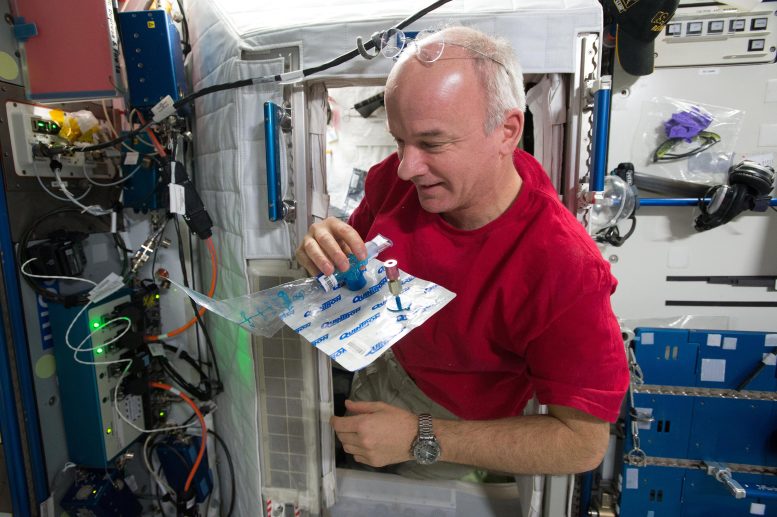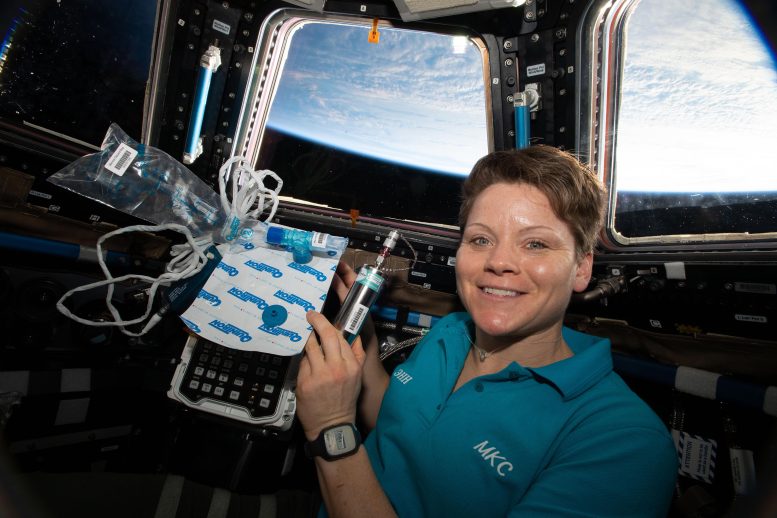Research reveals that astronauts experience a significant increase in red blood cell destruction while in space, leading to persistent anemia even after their return.
This challenges prior assumptions about space anemia’s causes and stresses the importance of health screenings and strategies for long-duration space missions.
It’s really true: space wants to kill us. And this time, space is trying to kill us from the inside out.
A new study on astronauts living on board the International Space Station shows that while in space, the astronauts’ bodies destroyed 54 percent more red blood cells than they normally would on Earth. Even after one year back on Earth after their flight, the symptoms of “space anemia” persisted in the 14 astronauts tested.
Understanding Anemia in Space
Anemia in astronauts has been known as an issue, even since some of the first human missions to space. Medical experts haven’t been sure, however, about the mechanisms contributing to anemia in space. For quite some time, it was thought that space anemia was part of the fluid shift in astronauts when they arrive in space due to the zero-gravity conditions.
Upon entry into microgravity, body fluids tend to migrate away from the legs toward the upper body and head, with the usual result of nasal congestion, a feeling of fullness in the head, and faces that look puffy. This fluid shift has also been part of the studies of why astronauts’ vision degrades while in space.

Astronaut Tim Peake’s first blood draw completed in space. The sample was taken as part of the MARROW experiment. Credit: NASA
Research Findings on Red Blood Cell Destruction
Previous studies showed that astronauts lose 10 percent of the liquid in their blood vessels while their bodies adapt to being in space. From those studies, it was thought vascular systems in the space environment rapidly destroyed 10 percent of the red blood cells to restore the balance, and that red blood cell control was back to normal after 10 days in space.
Instead, a team led by Dr. Guy Trudel from the Ottawa Hospital and University of Ottawa, found that the red blood cell destruction was a primary effect of being in space, not just caused by fluid shifts. Plus, the rate of red blood cell destruction persisted, albeit at a lower rate, for at least a year following the astronauts’ six-month expeditions in space.
“Here, we show that space flight is associated with persistently increased levels of products of hemoglobin degradation, carbon monoxide in alveolar air and iron in serum, in 14 astronauts throughout their 6-month missions onboard the International Space Station,” Trudel and his team wrote in their paper, published in Nature Medicine. “One year after landing, erythrocytic effects persisted, including increased levels of hemolysis, reticulocytosis, and hemoglobin.”

Astronaut David Saint-Jacques collecting breath, ambient air, and blood samples for the MARROW experiment. Credit: NASA
Long-Term Effects and Implications
These findings, the team said, suggest that the destruction of red blood cells, called hemolysis, is a primary effect of microgravity in space flight and support the hypothesis that the anemia associated with space flight is a hemolytic condition that should be considered in the screening and monitoring of both astronauts and space tourists.
Red blood cell destruction happens all the time in our bodies. On Earth, our bodies create and destroy 2 million red blood cells every second. The researchers found that astronauts’ bodies were destroying 54 percent more red blood cells during the six months they were in space, or 3 million every second. These results were the same for both female and male astronauts.
But the effects of this type of anemia aren’t evident until the astronauts return to Earth.

Astronaut Jeff Williams collects a breath sample for the MARROW experiment on board the International Space Station. Credit: NASA
“Thankfully, having fewer red blood cells in space isn’t a problem when your body is weightless,” said Trudel, in a press release. “But when landing on Earth and potentially on other planets or moons, anemia affecting your energy, endurance, and strength can threaten mission objectives. The effects of anemia are only felt once you land, and must deal with gravity again.”
In this study, five out of 13 astronauts were clinically anemic when they landed—one of the 14 astronauts did not have blood drawn on landing. While the researchers found that the anemia slowly improved after a few months, even one year after astronauts returned to Earth, red blood cell destruction was still 30 percent above preflight levels. The team said these results suggest that structural changes may have happened to the astronauts while they were in space that changed red blood cell control for up to a year after long-duration space missions.
Future Considerations for Space Travel
What does this mean for future space travelers? Trudel’s team said that everyone going to space should be screened for existing blood or health conditions that are affected by anemia. But also, since the study showed that the longer the space mission, the worse the anemia, this could impact long-duration missions to the Moon and Mars, since it is unclear at this point how long the body can withstand the higher rate of destruction and production of red blood cells. The researchers suggest an adapted diet for astronauts to try to counteract the anemia.
As with most physiological studies in space, these findings are applicable to people on Earth. Trudel wants to study this correlation in future studies.
“If we can find out exactly what’s causing this anemia, then there is a potential to treat it or prevent it, both for astronauts and for patients here on Earth,” said Trudel.
Adapted from an article originally published on Universe Today.
For more on this topic, read Space Anemia: Being in Space Destroys More Red Blood Cells.
Reference: “Hemolysis contributes to anemia during long-duration space flight” by Guy Trudel, Nibras Shahin, Timothy Ramsay, Odette Laneuville and Hakim Louati, 14 January 2022, Nature Medicine.
DOI: 10.1038/s41591-021-01637-7










Dear Sci-Tech Daily Staff Writers, UTCAA, and, anyone, phlebotomomalogically inclined, especially, now, best wishes and warm regards to one and all, I don’t proclaim to be very well versed, nor knowledgeable about all this, mostly I’m kinda fascinated and interested, to a good extent, yet, my trite waffling aside, I am wondering, please, whether all the analyses of all blood samples were analysed, both on-board the space-rocket-orbitting-observation-bigger and-cleverer-boys&girls toy-ship, and also, in the relevant type of blood analysts’ sorts of biological sciences labs, and in addition, also, please, could it be either said, or thought of and, ‘mebbe’, investigated by the properly actually qualified medically qualified, biological sciences, phlebotomist sorts of researchers that, possibly, the cause of each of the patients’s higher rates of the blood cell hemolysis was due to the zero, weightlessness of there being no gravity, whilst orbiting Planet Earth, in the space capsule rocket-star-ship thing, could be, perhaps by the shape of the red blood cells and similar blood cells, being either temporarily,or permanently, or even moderately affected by the non presence of gravity, and the body’s natural immune response system being what it is, in combination with what nature, can be, and kind of reacting by in it’s weird way, jus’ simply not recognising the shapes of the blood cells to be their regular shape that the blood cells are under any normal ground level, on Planet Earth conditions, and perhaps, because of the system which regulates such biological processes within the body’s everyday ways and means of sorting the wheat from the chaff, what’s good, what’s not so good, what’s right, what’s wrong, what’s healthy, what’s unhealthy, and so, therefore, p’raps, the system which decides whether to keep or destroy the blood cells during the process of hemolysis, rather than letting any doubt creep in, which may go against it’s biological ‘programming’, and not under any way of being capable, ‘probably’, (Eh??), of recognition that the shapes of the blood cells are slightly at odds with what ‘yer ackshual’ everyday blood cell normally may well be, only, it turns out’s ‘cos of the blood cells, within the bloodstream, of the patient, the person, the Name of the particular on-board, astronaut, the ‘cosmic-naut’, the air force pilot, of whatsoever nationality, and, sciences and engineering, technology background he or she may well be from, of the fellows Dudes and Dudesses, on-board the space-rocket-orbitting-observation-bigger ship, thing, are under conditions of there actually being no gravity present in whatever amount of time allowed, and allotted, they are in and at, and it’s only a temporary thing, it’s, at some point, as safely and securely, and soundly, too, to, to be brought in it’s normal, gravity present, Planet Earth, based condition, and, so, in it’s biological sciences programming sort of method of functional maintenance, it just chooses, perhaps, not having time as a spare thing which it can function by, due to it’s natural way of functioning, to do a bit more hemolysis than it would do so, normally, and only does this because of the weightlessness of no gravity present whilst on-board, in orbit, as the present company on-board the space module research ship are keeping a discerning, watchful eye over us lot, down ‘ere, on Planet Earth? Maybe? I dunno. I’m very sorry for my vaguely expanding what the main point of my thoughts about the possibility of there being no gravity on board the space research station, during it’s orbiting Planet Earth, maybe, just, minimally altering the shape of the blood cells, and the fifty percent more, additional increase in hemolysis being the due to a slight extent alteration in shape of the red blood cells, and expanding it way too much with purpley prosed, verbose pomposity and waffling on. Me typically being me. Thank you. Kind regards and all t’best, (Although, too wordily explained) , yet, best regards intended, all the same.
S.Teare.
An example of evolution
Is that what happened to Mark Kelly? From American hero to zero.
So we need a new space station and space suit and space craft and space force equipment etc, so this phenomenon doesn’t continue right?
So if I have to do all the work and designs and science stuff it becomes my downfall. Why cannot you all do it? You’ve angered the gods again right. Fell out of favor with the muses. Ah huh. Ok bubba. Sure thing I’ll fix it. But I’m in a space race with China. A civil war with several state hoods. A war with terrorists. Man I’ll tell you.
Wow the comments here are a roller coaster
Wonder if we lose a lot a red blood cells flying in an airplane.
Also the length of a trip would have to be examined.
A garden in space, food and produces oxygen, on a deep-space 9 startrek, station. I am looking for a investor to meet with.. [email protected]
Spleen involved? Kidneys impacted? Perhaps unlikely to be red cell shape? There is significant mis-shapenness in Sickle cell trait and HbE trait. ??